History
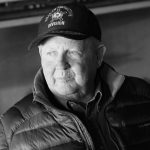 We all know about the Secret Service, but do we really know about them. They are always standing near the President and the other people they are sworn to protect, but most of the time they are virtually invisible. It’s not that we can’t see them, but rather that we don’t notice them, unless something goes haywire. Then their presence is very well known as the whisk the President to safety, while looking for the culprit who has dared to enter that guarded space that surrounds him.
We all know about the Secret Service, but do we really know about them. They are always standing near the President and the other people they are sworn to protect, but most of the time they are virtually invisible. It’s not that we can’t see them, but rather that we don’t notice them, unless something goes haywire. Then their presence is very well known as the whisk the President to safety, while looking for the culprit who has dared to enter that guarded space that surrounds him.
That is information we probably all know, but the Secret Service is much more. Founded in 1865, as an agency to stop counterfeiting, the past 150 years have seen many changes to that institution. Because it is their job to protect those they serve, the Secret Service agents must know a great deal about the people they guard, but they must also know a great deal about the essence of the political process.
Depending on their own interests, the President’s hobbies can be a pain for the Secret Service agents. If the President wants to go jogging, the Secret Service must go along, whether they like to jog or not. Also, the route must be checked, and can be a security nightmare. This applies to any trip the President makes as well.  The hotel, route, and especially the areas where he might be spending time, have to be checked and re-checked. There is no room for error, because if a gunman finds a place to hide, the President’s life could be in grave danger.
The hotel, route, and especially the areas where he might be spending time, have to be checked and re-checked. There is no room for error, because if a gunman finds a place to hide, the President’s life could be in grave danger.
Guarding the President also meant guarding his family, and if the children were young, it was much like being a glorified babysitter. The agent had to go to friends’ houses, ice cream parlors, toy stores, and a number of other places. Not all first children are well behaved, and the Secret Service witnessed it share of tantrums. If the kids didn’t like how things were going, they simply called their parents, who often told the agents to “take the child wherever he/she wanted to go.” This usually served to make the kids more bold and belligerent. Of course, not all of the children were unruly, but I would imagine that more were, than weren’t.
The Secret Service had to remain bi-partisan, because no matter what their political views were, their job was to protect the President, regardless of his political affiliation. The Secret Service agents also had to deal with the reckless behavior of the Presidents they served. Some Presidents were promiscuous, and expected their agents to warn them if their wife was coming in. Others were reckless with their own safety, as was the case when John F Kennedy, who insisted on riding through Dallas in a convertible on that fateful November day in 1963.
 While guarding the President of the United States can be stressful and worrisome, it can also be very rewarding. Of course, the Secret Service agents travel the world with the President, and they have front row seats to some of the greatest events in history. Still, some Secret Service agents actually bond with the President. Such was the case with President Ronald Reagan and Agent John Barletta. Agent Barletta says of President Reagan, “We worked so well together. The whole relationship was a projection of him, how he was… He was a great guy to be around. I wouldn’t trade those years for anything.” For most of the Secret Service agents, it is an honor and a privilege to protect the President. It doesn’t matter if the work id time consuming, complicated, and stressful. These men and women feel born to protect the President.
While guarding the President of the United States can be stressful and worrisome, it can also be very rewarding. Of course, the Secret Service agents travel the world with the President, and they have front row seats to some of the greatest events in history. Still, some Secret Service agents actually bond with the President. Such was the case with President Ronald Reagan and Agent John Barletta. Agent Barletta says of President Reagan, “We worked so well together. The whole relationship was a projection of him, how he was… He was a great guy to be around. I wouldn’t trade those years for anything.” For most of the Secret Service agents, it is an honor and a privilege to protect the President. It doesn’t matter if the work id time consuming, complicated, and stressful. These men and women feel born to protect the President.
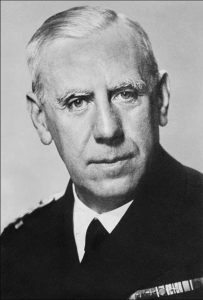 Wilhelm Canaris was born January 1, 1887, in Aplerbeck, Germany. The Germans celebrated him as a war hero during the First World War, for his many exploits as a submarine captain. Canaris later became a top military spy for Germany. He was appointed to head the Abwehr Military Intelligence in 1935. It seemed a fitting next step in a celebrated military officer’s career, but Canaris was not exactly what he seemed to be on the outside. I suppose that as a spy, that makes sense. Spies, by definition have to live life on the fringes, with few people really allowed to know the real man. Canaris had the added complication of being a double agent.
Wilhelm Canaris was born January 1, 1887, in Aplerbeck, Germany. The Germans celebrated him as a war hero during the First World War, for his many exploits as a submarine captain. Canaris later became a top military spy for Germany. He was appointed to head the Abwehr Military Intelligence in 1935. It seemed a fitting next step in a celebrated military officer’s career, but Canaris was not exactly what he seemed to be on the outside. I suppose that as a spy, that makes sense. Spies, by definition have to live life on the fringes, with few people really allowed to know the real man. Canaris had the added complication of being a double agent.
Canaris…the man behind the Nazi Abwehr spy network, was a shrewd, brilliant spymaster who managed to keep control of the Abwehr. He also outwitted Himmler at almost every turn, while joined with other high-ranking German officers in a dangerous plot to eliminate Hitler and make a separate peace with the Allies. I believe there were many German people, and military personnel who did not agree with Hitler, and some were brave enough to do something about it.
Admiral Wilhelm Canaris is the number one mystery man of the Nazi regime under Hitler to this day. Historians have argued his value for years. I’m sure many of them were convinced that he was actually working with the Nazis, instead of against them from the inside. Canaris stayed so tightly in his shell, probably a means of self-preservation, that he didn’t talk much, but was rather a great listener. Almost everybody who knew him didn’t really know exactly what his purpose and intentions were. The ability to be a good listener is a vital part of being a spy…as is the ability to keep your mouth shut about things. Rattling off too much information in a spy network, can get a spy killed.
Canaris, on the one hand, was the great protector of the German opposition against Hitler. On the other hand, he was the one who prepared all the big expansion plans for the acts and crimes of Hitler in the Third Reich. He had to protect and motivate the opposition members, all of whom were eager to fight against Hitler, and it had to appear that he was hunting them as conspirators. It was one of the many difficult contradictions Canaris was forced to live with to stay in control of the Abwehr. There were, of course, ugly sides to his job too. Canaris was an eye-witness to the killing of civilians in Poland. At Bedzin, SS troops pushed 200 Jews into a synagogue and then set it on fire. They all burned to death. Canaris was in shock. On September 10, 1939, he had to travel to the front to watch the German Army in action. This also gave him the opportunity to meet with his intelligence officers, who told him of insane massacres. Two days later, Canaris went to Hitler’s headquarters train…the Amerika, in Upper Silesia, to protest. He first saw General Wilhelm Keitel, Chief of the Armed Forces High Command. “I have information,” Canaris told Keitel, “that mass executions are being planned in Poland and that members of the Polish nobility and the clergy have been singled out for extermination.” He apparently had no idea of Hitler’s real plan for the “final solution.”
Canaris told Keitel, “The world will one day hold the Wehrmacht responsible for these methods since these things are taking place under its nose.” Keitel told Canaris to take the matter no further. I’m sure that Keitel made it clear that Canaris’ life depended on keeping his mouth shut about these things. Canaris did as he was told, or so the Nazis thought. Before long, however, the Vatican began to receive regular, detailed reports of Nazi atrocities in Poland. The information had been gathered by agents of the Abwehr by order of Canaris, who passed them on to Dr Josef Muller, who was a devout Catholic and a leading figure in the Catholic resistance to Hitler. Muller, in turn, got the reports safely to Rome. Canaris sent another of his colleagues, Pastor Dietrich Bonhoeffer, on a flight to Sweden to meet secretly with Bishop Bell of Chichester. Bonhoeffer told Bell of the crimes his nation was committing, and assured Bell of growing resistance in Germany to such acts. In March 1943, Canaris personally flew to Smolensk to plan Hitler’s assassination with conspirators on the staff of Army Group Center.
The efforts of Canaris were later made clear during the Nuremburg Trials, but it was too late for Canaris. He had made strenuous efforts in trying to put a stop to the crimes of war and genocide committed by Hitler. Admiral Canaris, along with his second-in-command, Hans Oster, actually helped the Allies while supervising all German espionage, counterespionage, and sabotage. He revealed almost all of the important German strategy and battle plans to the Allies. From Hitler’s impending western offensive against the Low countries and France to Hitler’s plan to invade Britain. Canaris also misled Hitler into believing that the Allies would not land at Anzio in 1943. The work Canaris was doing against became evident to Hitler only after the conspirators attempted to kill him in July 1944. Canaris and many others were arrested. The principal prisoners were confined at Gestapo cellars at Prinz Albrechtstrasse. Canaris was kept in solitary confinement, in chains. Canaris’ cell door was permanently open, and the light burned continually, day and night. He was given only one third of the normal prison rations. As winter set in, his starved body suffered cruelly from the cold. He was also humiliated by being forced to do menial jobs, such as scrubbing the prison floor, the SS men mocking him.
On February 7, 1945, Canaris was brought to the Flossenburg concentration camp. His treatment did not improve there. He was still treated badly, and often endured having his face slapped by the SS guards. Nevertheless, Canaris baffled the SS interrogators with one ruse after another, and he denied all personal complicity in the conspiracy. He never betrayed his fellow participants in the Resistance Movement. During the last weeks of the Nazi era, SS Obersturmbannführer Walter Huppenkothen and Sturmbannführer Otto Thorbeck were sent to Flossenburg to eliminate Canaris and the other resistance figures. A bogus “trial” was held, after which the men hung the victims. A few more days and the war would have been over, but in the gray morning hours of April 9, 1945, gallows were erected hastily in the courtyard for Wilhelm Canaris, Dietrich Bonhoeffer, Major General Hans Oster, Judge Advocate General Carl Sack, Captain Ludwig Gehre. The men were ordered to remove their clothing and were led down the steps under the trees to the secluded place of execution before hooting SS guards. Naked under the scaffold, they were allowed to pray one last time, then they were hanged, and their corpses left to rot. Two weeks later, on April 23, 1945, the camp was liberated by American troops.
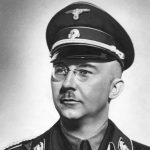

Admiral Wilhelm Canaris was a true hero, in the face of unbelievable odds. I’m sure he know that he would get caught at some point, and I’m equally sure that he knew he would be killed, when he was caught. Nevertheless, he said of his actions, “I die for my fatherland. I have a clear conscience. I only did my duty to my country when I tried to oppose the criminal folly of Hitler.” He knew that his death was worth fighting the evil that was the Third Reich. I only wish that he had survived so that he could have been properly honored.
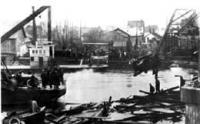 On January 3, 1923, the suspension bridge at Kelso, Washington was nearly finished…but it had not yet been opened, and the old bridge was still in use. The old bridge was just that…old, and they knew it, but until the new bridge was open, the old bridge was all they had. Both bridges spanned the Cowlitz River. Kelso was a small town, with a population of less that 2,000 people on the day in 1923.
On January 3, 1923, the suspension bridge at Kelso, Washington was nearly finished…but it had not yet been opened, and the old bridge was still in use. The old bridge was just that…old, and they knew it, but until the new bridge was open, the old bridge was all they had. Both bridges spanned the Cowlitz River. Kelso was a small town, with a population of less that 2,000 people on the day in 1923.
On that day, the bridge, which was a major roadway in the area was experiencing a traffic jam, due to a stalled car in the middle. To further complicate matters, there was a crowd of people in the area who had gathered to watch a log jam. The combined congestion on the bridge caused the cable that held the bridge up give way. Approximately 100 people were thrown into the flooded and rushing river. The collapse happened at night, making rescue and recovery very difficult. No bodies were 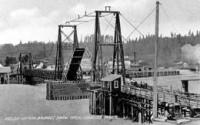 located that first night, and 20 to 30 people were said the be missing. About the same number of people had been rescued from the river with various injuries. To further complicate matters, a transformer in the electric plant had blown out, so there were no electric lights.
located that first night, and 20 to 30 people were said the be missing. About the same number of people had been rescued from the river with various injuries. To further complicate matters, a transformer in the electric plant had blown out, so there were no electric lights.
Two piers of heavy piling provided the foundations for the structure, which was of a bascule suspension type, this construction being necessary because of the fact that the Cowlitz is a navigable waterway. The two lift portions of the bridge meeting at the center were suspended by steel cables from two high wooden towers. With the exception of the steel cables the entire bridge was of wood. The collapsed span of the bridge had been supported by the cables, and when one of the supporting piers buckled under the weight of the traffic, the 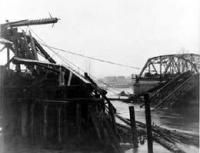 whole bridge went down. Normally the Cowlitz River is a narrow stream, but in times of high water, the river becomes very swift. In this sad instance, heavy rains had flooded the river.
whole bridge went down. Normally the Cowlitz River is a narrow stream, but in times of high water, the river becomes very swift. In this sad instance, heavy rains had flooded the river.
The town of Kelso was in chaos shortly after the crash. People were frantically searching for friends and family. Many rushed to the hospital in search of their people. I they didn’t find them there, they rushed back to the river. Adding to the chaos was the current blackout in the town. At one hospital an operation upon an accident victim was in progress as the lights there flickered. Those who were injured had a long road to recovery, and that was just from their injuries. Still, they were blessed. They lived.
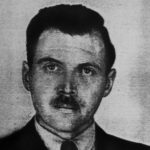
 Most people would not think that the things Dr Gisella Perl did at Auschwitz during the Holocaust were angelic in any way, but the prisoners there, the women whose lives she saved would say otherwise. To them, she was an angel of mercy…even if some of the things she had to do were so horrific that she tried to commit suicide after the war. Dr Perl was a successful Jewish gynecologist from Romania, where she lived with her husband and two children. Right before the Nazi soldiers stormed her home, she was able to hid her daughter with some non-Jews, but she, her husband, son, her elderly parents who captured and taken to Auschwitz. Once they arrived, Gisella was separated from her family. They would be sent to be slave labor or to be killed. She would never see any of them again. Because she was a doctor, she was to be used in a different way…a horrifically gruesome way. She was to work for Dr Joseph Mengele, to be at his beck and call, and the things he made her do nearly killed her. She was a doctor. She was supposed to save lives, not be involved in ending them…or worse, but that was the position he put her in.
Most people would not think that the things Dr Gisella Perl did at Auschwitz during the Holocaust were angelic in any way, but the prisoners there, the women whose lives she saved would say otherwise. To them, she was an angel of mercy…even if some of the things she had to do were so horrific that she tried to commit suicide after the war. Dr Perl was a successful Jewish gynecologist from Romania, where she lived with her husband and two children. Right before the Nazi soldiers stormed her home, she was able to hid her daughter with some non-Jews, but she, her husband, son, her elderly parents who captured and taken to Auschwitz. Once they arrived, Gisella was separated from her family. They would be sent to be slave labor or to be killed. She would never see any of them again. Because she was a doctor, she was to be used in a different way…a horrifically gruesome way. She was to work for Dr Joseph Mengele, to be at his beck and call, and the things he made her do nearly killed her. She was a doctor. She was supposed to save lives, not be involved in ending them…or worse, but that was the position he put her in.
First, he told her to round up any pregnant women. She thought she was going to be caring for these women, but after she turned over 50 women, and they were immediately sent to the gas chambers, a horrified Dr Perl made up her mind that somehow, she would do whatever she could to thwart the Nazis horrible plans. She had not understood what was goin to happen to the pregnant women she turned over, and the thought of her part in their loss of live, nearly killed her. The things she did after that first horrible mistake, might not seem to most people, including me, like the actions of an angel, but I can see that she had no real choices.
The women Dr Perl cared for had been treated horrible by the Nazi soldiers. Their wounds consisted of lashes from a whip on bare skin, to bites from dogs, to infections from the horribly unsanitary conditions. When she entered the room, the prisoners in the infirmary knew that she was there to help. That was the good part of her life at Auschwitz, but Dr Mengele was a cruel and evil man, and he was determined to kill any pregnant woman. This left Dr Perl with an extremely difficult decision to make. She could watch as the mother and baby were put to death, or she could abort the babies and give the mothers the chance to live to have a family later. The choice was unthinkable to her, but it was also a non-choice. She could lose one life or both. The abortions were performed in secret, often in darkness, and the women whose lives she saved…well, they were grateful, even 
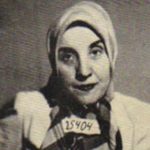 though they mourned their babies and never truly got over the decisions they and Dr Perl made. Later in life, after the war, Dr Perl went on to deliver many live babies, rejoicing over each. She was bold with God, telling him, when a baby seemed unlikely to make it, that God owed her this baby, because of those she could not save in the Holocaust. God honored her prayers, and gave her the healthy babies she requested of Him. I think He considered her the Angel of Auschwitz too.
though they mourned their babies and never truly got over the decisions they and Dr Perl made. Later in life, after the war, Dr Perl went on to deliver many live babies, rejoicing over each. She was bold with God, telling him, when a baby seemed unlikely to make it, that God owed her this baby, because of those she could not save in the Holocaust. God honored her prayers, and gave her the healthy babies she requested of Him. I think He considered her the Angel of Auschwitz too.
 When my dad, Allen Spencer and his brother, Bill Spencer were young boys going to school, their dad, Allen Luther Spencer worked for the Great Northern Railway. Because they lived a good distance from school, the boys and their sister, Ruth Wolfe had a dependent pass to ride the train to school. That pass didn’t stop the boys from “hopping” the train…in true Hobo fashion. Of course, we know that “hopping” a train is illegal now, but back then it wasn’t. My dad, Uncle Bill, and Aunt Ruth had passes however, so
When my dad, Allen Spencer and his brother, Bill Spencer were young boys going to school, their dad, Allen Luther Spencer worked for the Great Northern Railway. Because they lived a good distance from school, the boys and their sister, Ruth Wolfe had a dependent pass to ride the train to school. That pass didn’t stop the boys from “hopping” the train…in true Hobo fashion. Of course, we know that “hopping” a train is illegal now, but back then it wasn’t. My dad, Uncle Bill, and Aunt Ruth had passes however, so  while they weren’t supposed to hop the train, it wouldn’t have been illegal anyway, because they had a pass…just not to hop the train.
while they weren’t supposed to hop the train, it wouldn’t have been illegal anyway, because they had a pass…just not to hop the train.
During the Depression years, there were a lot of Hobos. The railroad was a quick way to get to jobs far away…and it wasn’t technically illegal…just frowned upon. President Roosevelt even created the 1933 Federal Transient Service, which built 600 shelters alongside the trains, to provide food, board, and medical care for working migrants…aka hobos, or at least part of them. As organized crime began using the railway for it’s own purposes, these services were shut down, and “hopping” a train became illegal. Nevertheless, illegal or not, there are actually tons of resources  online to help hobos, and most hobos carry smart phones, and even laptops, so they can take advantage of the online forums and Facebook pages available to them. I looked at these online sites, and I found that they call themselves misfit travelers.
online to help hobos, and most hobos carry smart phones, and even laptops, so they can take advantage of the online forums and Facebook pages available to them. I looked at these online sites, and I found that they call themselves misfit travelers.
Over the years, hobos have developed their own code and language. I found that to be very interesting. Life on the streets, and especially train hopping can be a very dangerous kind of lifestyle. Sometimes, people living on the streets and traveling by hopping trains, need help…even if they find themselves in a position whereby they have to bend the law a little. Th codes and the language they developed help them maneuver this world in a little bit more safe way. I’m not condoning breaking the law, but these people are already there. They just took a wrong turn, and now they need help to make it, and hopefully make it back.
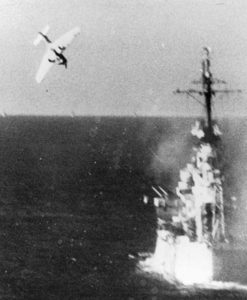 It is a strange idea to give a pilot minimal training and then send them out to do a mission, but it depends, I suppose on the mission they are sent out to do. With Japan losing the war and most of the well trained pilots gone, as a result of major battle losses, a new breed of pilots was born. These new pilots were called Kamikaze or Suicide Bombers. They required only minimal training, because most would not return from their missions. It was part of a strange plan that required the pilot to deliberately give up their life for the mission. Of course, every soldier knows that the next mission could end badly, and that losing their life is never out of the question, but the idea of heading out with the specific plan of crashing your plane into a ship is very foreign to me.
It is a strange idea to give a pilot minimal training and then send them out to do a mission, but it depends, I suppose on the mission they are sent out to do. With Japan losing the war and most of the well trained pilots gone, as a result of major battle losses, a new breed of pilots was born. These new pilots were called Kamikaze or Suicide Bombers. They required only minimal training, because most would not return from their missions. It was part of a strange plan that required the pilot to deliberately give up their life for the mission. Of course, every soldier knows that the next mission could end badly, and that losing their life is never out of the question, but the idea of heading out with the specific plan of crashing your plane into a ship is very foreign to me.
From a training aspect, I suppose the Japanese felt it was a good tradeoff. The 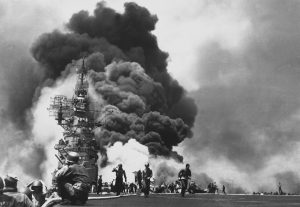 Kamikaze pilots needed little training and could do great damage taking planes full of explosives and crash them into ships. Still, it seems to me that the cost of the training, and the loss of the planes on every mission…not to mention the loss of pilots, would completely defeat the purpose of the pilot training. Nevertheless, Kamikaze pilots have been around a while, and some nations see suicide missions as honorable somehow. Everyone knows that in a war, people are going to die, from both sides, but to specifically plan to take your own life for the mission, seems crazy to me, and to most sane people.
Kamikaze pilots needed little training and could do great damage taking planes full of explosives and crash them into ships. Still, it seems to me that the cost of the training, and the loss of the planes on every mission…not to mention the loss of pilots, would completely defeat the purpose of the pilot training. Nevertheless, Kamikaze pilots have been around a while, and some nations see suicide missions as honorable somehow. Everyone knows that in a war, people are going to die, from both sides, but to specifically plan to take your own life for the mission, seems crazy to me, and to most sane people.

For the Japanese, the Kamikaze mission brought a temporary measure of success, I suppose. At Okinawa, they sank 30 ships and killed almost 5,000 Americans. In that process, 30 pilots, who paid for the victory with their lives, were also lost in the mission. And in the end, the Kamikaze missions made no real difference in the war’s outcome. They still lost the war, and to me, that does not make the Kamikaze missions worthwhile. I don’t think it ever pays to take so little consideration for the lives of the people who serve under you. I believe that is the biggest mistake made by these horrific regimes. Such a murderous nation cannot long succeed, because people will eventually put a stop to it. The only sad part is that sometimes it takes so long to put a stop to these horrific acts. Kamikaze pilots, suicide bombers, and any other soldier who’s mission requires his own death, all fall into the category of a price too high to pay.
 Every United States Presidential election brings heated debates, and many arguments from both sides of the aisle. I’m sure it is the same in most other nations, who have the opportunity to vote too. Being an unapologetic Conservative, it is my belief that the less the government controls the citizens the better. Socialism and Fascism are both forms of government control, and while some people think these are great, they ultimately find out that what the government gives, the government can also take away. This was what we saw with Adolf Hitler. He came into office as an elected official, and before long, he changed everything for the German people, and in many ways the world, especially the Jewish people, Gypsies, and any other groups he disagreed with. The people were fooled into thinking he was a great man, until it was too late.
Every United States Presidential election brings heated debates, and many arguments from both sides of the aisle. I’m sure it is the same in most other nations, who have the opportunity to vote too. Being an unapologetic Conservative, it is my belief that the less the government controls the citizens the better. Socialism and Fascism are both forms of government control, and while some people think these are great, they ultimately find out that what the government gives, the government can also take away. This was what we saw with Adolf Hitler. He came into office as an elected official, and before long, he changed everything for the German people, and in many ways the world, especially the Jewish people, Gypsies, and any other groups he disagreed with. The people were fooled into thinking he was a great man, until it was too late.
Similar to Adolf Hitler, Italian Fascist leader Benito Mussolini did not become the dictator of a totalitarian regime overnight. Mussolini started out as a schoolteacher and an avowed socialist. After World War I he became a leader of the nascent Fascist movement. Like much of Europe, Italy was in the middle of great social turmoil following World War I. During the turmoil, paramilitary groups and street gangs frequently clashed over their competing ideas for the new political order. A close confidant of Mussolini formed a Fascist paramilitary group, known as the Blackshirts or Squadristi, and because Mussolini was their leader, the gangs found that government fears of a communist revolution allowed them to operate without state intervention. Apparently, the people thought Socialism and Fascism were better than Communism. By 1921, Mussolini had been elected to parliament as the leader of the growing National Fascist Party.
Soon after Mussolini’s election…the party’s Chosen One…armed Blackshirts marched on Rome, demanding that the king install Mussolini as Prime Minister. Why the king allowed this to happen, is beyond me, but in a decision that utterly changed the course of Italian and European history, King Victor Emmanuel III ignored Prime Minister Luigi Facta’s pleas that he declare martial law, leading to Facta’s resignation and Emmanuel’s invitation to Mussolini to form a new government. It was a move that was completely insane. The Fascists and their moderate allies began dismantling Italy’s democratic institutions. Mussolini was proclaimed dictator for a year, like that was going to be all it was, and increasingly merged his party and its paramilitary wing with the state and the official military. He also undertook a program of privatizations and anti-union legislation in order to assure industrialists and aristocrats that fascism would protect them from socialism. Before long, the Italian government didn’t even resemble its former self.
Still, many Fascists felt Mussolini was moving too slowly, so they took matters into their own hands. In 1924, assassins with ties to Mussolini killed socialist leader Giacomo Matteotti, leading most of the parliamentary opposition to boycott Mussolini’s legislature. The Fascists felt that their moment had come. On December 31, 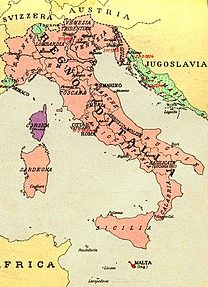 they issued an ultimatum to Mussolini. Three days later on January 3rd, he addressed the remainder of parliament, declaring “I, and I alone, assume the political, moral, and historical responsibility for all that has happened,” obliquely referring to the assassination of Matteotti. In doing this, Mussolini dared prosecutors and the rest of Italy’s democratic institutions, as well as the king, to challenge his authority. It was their last chance, but no one opposed him. Thus, from 1925 onward, Mussolini was able to operate openly as a dictator, styling himself Il Duce (meaning The Leader) and fusing the state and the Fascist Party. For the next two decades, suppression and brutality became the norm, culminating in Mussolini’s alliance with Nazi Germany and World War II. I heard it said that, “You can vote yourself into Socialism, but you will have to shoot your way out of it.” It is a good warning for all of us as we approach the next Presidential election. We have a number of candidates who want Socialism, and it would be a dire mistake to allow that to happen to our free, Capitalist nation. People don’t always understand how important our elections are.
they issued an ultimatum to Mussolini. Three days later on January 3rd, he addressed the remainder of parliament, declaring “I, and I alone, assume the political, moral, and historical responsibility for all that has happened,” obliquely referring to the assassination of Matteotti. In doing this, Mussolini dared prosecutors and the rest of Italy’s democratic institutions, as well as the king, to challenge his authority. It was their last chance, but no one opposed him. Thus, from 1925 onward, Mussolini was able to operate openly as a dictator, styling himself Il Duce (meaning The Leader) and fusing the state and the Fascist Party. For the next two decades, suppression and brutality became the norm, culminating in Mussolini’s alliance with Nazi Germany and World War II. I heard it said that, “You can vote yourself into Socialism, but you will have to shoot your way out of it.” It is a good warning for all of us as we approach the next Presidential election. We have a number of candidates who want Socialism, and it would be a dire mistake to allow that to happen to our free, Capitalist nation. People don’t always understand how important our elections are.
 In 1995, during the Christmas season, Lena Paahlsson was baking Christmas cookies with her daughters at their farm in northern Sweden. As was her habit while baking, Lena took off her wedding ring, and placed it on the counter. While they were cleaning up after baking, Lena could not find her ring. It was a devastating end to the year. Lena and her family hunted for the ring everywhere, even pulling up floorboards…hoping against hope, but to no avail. The ring had vanished…lost forever, or so they thought.
In 1995, during the Christmas season, Lena Paahlsson was baking Christmas cookies with her daughters at their farm in northern Sweden. As was her habit while baking, Lena took off her wedding ring, and placed it on the counter. While they were cleaning up after baking, Lena could not find her ring. It was a devastating end to the year. Lena and her family hunted for the ring everywhere, even pulling up floorboards…hoping against hope, but to no avail. The ring had vanished…lost forever, or so they thought.
Then, one day in October 2011, while she was pulling the last of the carrots from her garden, Lena was stunned to see her wedding ring wrapped neatly around the top of the carrot. Lena had given up hope of ever finding the ring she cherished. The family speculates that the ring must have fallen into the sink, and been mixed with the potato peels that were later composted or fed to the sheep, because the soil in the garden is made from composted vegetables and sheep dung. They have no idea why it took 16 years for the ring to work its way to the surface again, but they are sure that if the ring had not had a tiny carrot seed land in its middle, it would have still be 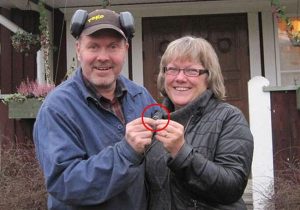 hiding there in the rich dirt of the garden. In the end, it was a Carat Carrot that returned her ring to her.
hiding there in the rich dirt of the garden. In the end, it was a Carat Carrot that returned her ring to her.
Unfortunately, after all these years, the ring no longer fits Lena. It will need to be sized before she can wear it again. They fact certainly didn’t dim the joy and happiness the family felt at the return of the precious ring. Lena says, “I had given up hope. Now that I have found the ring again I want to be able to use it.” I’m sure that the Carat Carrot made the meal it was used in just that much better. Imagine…the carrot had a very special job to do, before it went on to do what it was destined to do in the first place.
 The life of a spy is a dangerous one. Getting caught spying is often punishable by death, so the key to being a successful…and later old spy, is not to get killed, and therefore not to get caught. The spies had a number of way so fool the Nazis. One of the ways was to research the proper clothing for the area and the times, and make sure that the clothing of the spy didn’t stand out as being foreign or outdated. To miscalculated that aspect of the spy, could mean certain death.
The life of a spy is a dangerous one. Getting caught spying is often punishable by death, so the key to being a successful…and later old spy, is not to get killed, and therefore not to get caught. The spies had a number of way so fool the Nazis. One of the ways was to research the proper clothing for the area and the times, and make sure that the clothing of the spy didn’t stand out as being foreign or outdated. To miscalculated that aspect of the spy, could mean certain death.
Clothing wasn’t always the concern. When a spy is being followed, footprints can be very telling. One of the ways that the spies fooled the Nazis was the spy shoes they wore. The shoes were very functional as a way to disguise what was going on, but the looked hilarious. The idea of the shoes was to make the person following the spy think that  the spy was going the opposite direction from that which the spy was really going. Basically, the shoe was put on the sole backwards. That way, the person following the spy, would think he was walking toward the spy, when he was actually walking away from him. The technique gave the spy precious time to get far away from the enemy who was tracking him. The only problem for the spy was the shape of the shoe. It seems to me that the shape of the shoe would feel very odd to the spy. Nevertheless, the shoe was necessary, and so the spy got used to it. I suppose the feeling was similar to a child putting their shoes on the wrong feet. It is thought that the shoes might have first been used by Moonshiners during the prohibition period.
the spy was going the opposite direction from that which the spy was really going. Basically, the shoe was put on the sole backwards. That way, the person following the spy, would think he was walking toward the spy, when he was actually walking away from him. The technique gave the spy precious time to get far away from the enemy who was tracking him. The only problem for the spy was the shape of the shoe. It seems to me that the shape of the shoe would feel very odd to the spy. Nevertheless, the shoe was necessary, and so the spy got used to it. I suppose the feeling was similar to a child putting their shoes on the wrong feet. It is thought that the shoes might have first been used by Moonshiners during the prohibition period.
Our more modern day thought concerning spy shoes and other equipment is probably far more advanced. The shoes might have contained a knife in the heel or even a shoe phone, like Maxwell Smart…on the show “Get  Smart.” Of course, much of that is fiction, and I don’t know if real modern day spies even use special shoes or any other special spy tools, for that matter. The Backward Spy Shoes were a very simple tool, but it would seem that they were highly effective during World War II. The only problem I see with a shoe that takes a tracker back to the starting point of the spy who is being pursued is that it would make it impossible to return to the point of origin for fear of being tracked there. Of course if the spy walked to a public place, like a train station, and then switched shoes, they could easily get lost in the crowd, never to be found. Either way, the shoes were a clever way to outsmart the enemy.
Smart.” Of course, much of that is fiction, and I don’t know if real modern day spies even use special shoes or any other special spy tools, for that matter. The Backward Spy Shoes were a very simple tool, but it would seem that they were highly effective during World War II. The only problem I see with a shoe that takes a tracker back to the starting point of the spy who is being pursued is that it would make it impossible to return to the point of origin for fear of being tracked there. Of course if the spy walked to a public place, like a train station, and then switched shoes, they could easily get lost in the crowd, never to be found. Either way, the shoes were a clever way to outsmart the enemy.
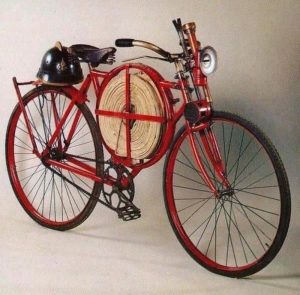 At the turn of the century, some firefighters arrived at the fire in a slightly different way than the normal truck or wagon. I don’t suppose that this was a common practice, because in most cases, it would be impractical, but for the firefighters in the workshops of Birmingham Small Arms in Great Britain, it was the normal mode of transportation. Birmingham Small Arms built a special bicycle for their firefighters. The bicycle would be an interesting way to ride to and from work, as well, but this one was to be used for a very special purpose. I would think that there might have been several businesses like Birmingham Small Arms, that utilized this type of firefighting “truck.”
At the turn of the century, some firefighters arrived at the fire in a slightly different way than the normal truck or wagon. I don’t suppose that this was a common practice, because in most cases, it would be impractical, but for the firefighters in the workshops of Birmingham Small Arms in Great Britain, it was the normal mode of transportation. Birmingham Small Arms built a special bicycle for their firefighters. The bicycle would be an interesting way to ride to and from work, as well, but this one was to be used for a very special purpose. I would think that there might have been several businesses like Birmingham Small Arms, that utilized this type of firefighting “truck.”
The bicycle was equipped with a fire hose that could be hooked up to a hydrant, and a spindle to hold it. It also held a crowbar to get into buildings, and a flashlight so the firefighter could see to get around in the dark. The bicycle wouldn’t be practical in a big city, but for a small town, or a company yard, it was perfect. I can see where it 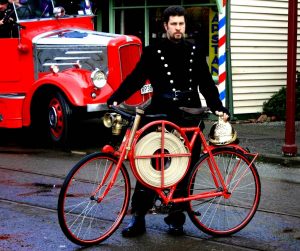 could be problematic if they tried to use the bicycle in the wintertime, but the other season would be ok for the most part.
could be problematic if they tried to use the bicycle in the wintertime, but the other season would be ok for the most part.
Of course, I can see some ways in which the fire bike would not really be the best option. Fire hose has a lot of pressure, and so, would it knock the bicycle over. Also, I’m not sure how wide the firehose spindle is, but it seems to me that it could make peddling difficult. I’m not sure how heavy of how well balanced the bicycle is, but it seems like it might be top heavy. Given the possible problems with the fire bike, I think it might be best to stick with a fire truck. The modern day firetrucks are able to carry lots of other equipment that is necessary to fighting fires. They can also go most places, in all kinds of weather…just a better idea, in the long run.

